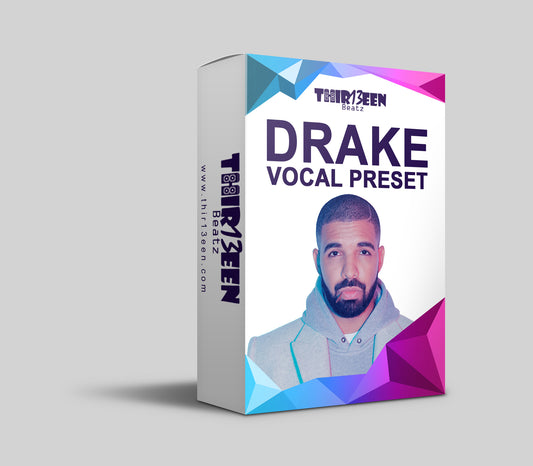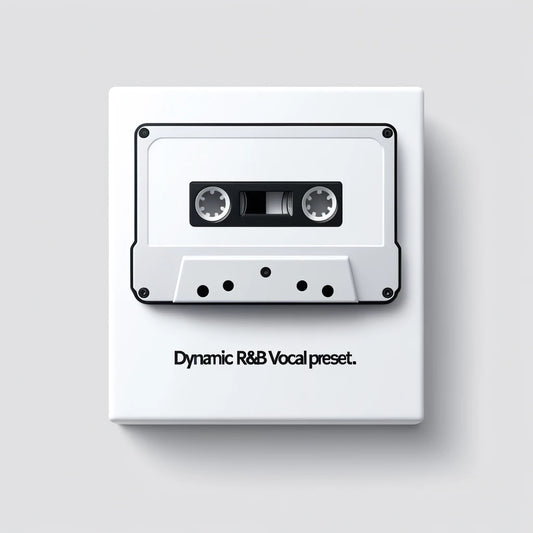Intro to the Yamaha HS8 Review
The Yamaha HS8 studio monitor speakers are a staple in the world of music production, renowned for their precision and reliability. These speakers offer an unmatched clarity that can significantly elevate the quality of your mixes, making them an essential tool for any serious producer. The HS8 model, part of Yamaha's acclaimed HS series, stands out not only for its sound quality but also for its robust design, making it a favorite among both home studio enthusiasts and professional engineers alike.
Understanding the critical role of studio monitors in the music production process is crucial. The HS8 speakers provide an accurate representation of your audio, allowing you to make informed mixing decisions. This review will delve into the specifics of the Yamaha HS8, including its design, sound performance, and unique features. Whether you're considering an upgrade to your current setup or choosing your first pair of studio monitors, this detailed review will give you all the information you need to know about the Yamaha HS8 and how it compares to other models in the HS series.
Yamaha HS8 Studio Monitor Speakers Review
The Yamaha HS8 Studio Monitor Speakers are designed with a meticulous attention to detail, aimed at providing an accurate and clean sound reproduction that's essential for music production. Standing out with its white-coned 8-inch woofer and 1-inch dome tweeter, the HS8 offers a wide frequency response that ensures you hear every detail in your mix. The monitor's enclosure is constructed from a dense MDF material, which minimizes resonance and enhances durability, making it a long-lasting addition to any studio setup.
Key Features:
- High-Resolution Sound: With a frequency response of 38Hz to 30kHz, the HS8 delivers detailed highs and rich lows, making it ideal for a wide range of musical genres.
- Room Control and High Trim: These features allow for adjustable frequency response to match the acoustics of your mixing environment, ensuring accurate mixes.
- Low Resonance Enclosure Design: The MDF build and a unique port design reduce unwanted resonance, offering a clearer sound.
Pros:
- Exceptional flat response for accurate monitoring.
- Versatile controls for room adaptation.
- Robust construction and reliability.
Cons:
- May require additional subwoofer for extremely low-frequency work.
- Some users might find them too clinical for casual listening.
Summary: The Yamaha HS8 studio monitors are a superb choice for both budding home studio enthusiasts and professional producers. Offering unmatched clarity and fidelity, they stand out in their ability to reveal every nuance in a mix, ensuring your productions translate well across different playback systems. While their critical listening design is focused more on accuracy than on embellishing the sound, this characteristic is exactly what makes them invaluable for serious music production tasks.
Yamaha HS8 Sound Quality and Performance
The Yamaha HS8 studio monitor speakers shine when it comes to audio performance, delivering unparalleled sound quality that professionals and enthusiasts alike have come to rely on. The HS8's ability to reproduce sound accurately across a wide frequency spectrum makes it a powerhouse in any studio setting. Its 8-inch cone woofer and 1-inch dome tweeter work in harmony to provide a balanced mix of deep basses and crisp highs, ensuring that every element of your mix is heard as intended.
Key Highlights:
- Flat Frequency Response: The HS8 offers a remarkably flat response, critical for mixing and mastering tasks where precision is paramount.
- Bass Reflex System: This design feature enhances low-end response without muddiness, making the HS8 ideal for genres that rely heavily on bass.
- Bi-Amplified Power: With separate amplifiers for the woofer and tweeter, the HS8 ensures high-resolution sound with minimal distortion across all frequencies.
Sound Quality Insights:
- The HS8 excels in delivering detailed midranges, making vocals and lead instruments stand out clearly in a mix.
- Its high-frequency response is smooth, without being overly bright or harsh, allowing for extended mixing sessions without fatigue.
- The bass response is tight and controlled, providing a solid foundation without overwhelming the mix's balance.
Performance Analysis: The Yamaha HS8 performs exceptionally well across various musical styles, from electronic to acoustic genres. Its precise sound reproduction allows producers to make informed decisions during the mixing process, ensuring that mixes translate well on other playback systems. The monitor's ability to handle complex mixes with multiple layers and intricate details highlights its superior performance and reliability as a studio essential.
In summary, the Yamaha HS8's sound quality and performance are designed to meet the demands of critical listening environments, offering an honest and accurate representation of your music. This level of clarity and fidelity is what makes the HS8 a favored choice among professionals seeking to perfect their mixes.
Also Read: The Best PC Soundbar
Yamaha HS8 Features and Technology
The Yamaha HS8 studio monitors are renowned for their innovative features and advanced technology, which significantly contribute to their exceptional sound quality. The heart of the HS8's superior performance lies in its meticulously engineered components and design philosophy, aimed at achieving the most accurate sound reproduction possible.
Key Features:
- Room Control and High Trim Response Controls: These features allow for fine-tuning of the sound in various environments, ensuring optimal performance regardless of room acoustics.
- Advanced Bi-Amplification System: The HS8 employs a dual amplifier setup, separately powering the woofer and tweeter for a clearer, more accurate sound across the entire frequency range.
- Proprietary Transducer Design: Utilizing a unique transducer design developed by Yamaha, the HS8 delivers unmatched transient response and minimal distortion.
Technological Insights:
- Magnetic Shielding: This allows the monitors to be placed near sensitive equipment without causing interference, making them versatile for any studio setup.
- Port Technology: The HS8 features a specially designed port that reduces noise at high output levels, enhancing the clarity of bass frequencies.
Setting the HS8 Apart: What distinguishes the HS8 from competitors is its commitment to sonic purity. Yamaha's philosophy of "sonic honesty" ensures that what you hear is an uncolored, true representation of your mix, which is crucial for making accurate mixing decisions. Furthermore, the robust construction and reliability of the HS8 mean it can withstand the demands of professional studio environments, making it a long-term investment for serious producers.
In conclusion, the Yamaha HS8's unique features and cutting-edge technology not only define its remarkable sound quality but also establish it as a leader in studio monitoring solutions. The HS8's ability to deliver precise, flat response across all frequencies makes it an invaluable tool for music production, offering clarity and detail that can elevate any mix.
Setting Up Your Yamaha HS8 for Optimal Sound
Setting up your Yamaha HS8 studio monitors correctly is crucial for achieving the best sound. The placement of these speakers and the acoustics of your room significantly impact their performance.
Placement Tips:
- Keep Them at Ear Level: Position the HS8s so that the tweeters are at ear level for the most accurate sound reproduction.
- Form an Equilateral Triangle: Arrange your listening position and the two speakers to form an equilateral triangle. This setup ensures a balanced stereo image.
- Avoid Wall Proximity: Place the HS8s at least a few feet away from walls to minimize bass reflection and ensure clearer sound.
Room Acoustics:
- Treat Your Room: Adding acoustic panels or diffusers can greatly improve the sound by reducing unwanted reflections and flutter echoes.
- Minimize Interference: Ensure there's nothing directly between you and the speakers that could obstruct the sound path.
Integration Tips:
- Calibrate Your System: Use a sound level meter to adjust the volume of each speaker, ensuring they are balanced.
- Consider Subwoofers: For an even deeper bass response, consider integrating a subwoofer into your setup, especially in larger rooms.
By meticulously setting up your Yamaha HS8 monitors, you not only enhance your mixing environment but also take full advantage of their precise sound reproduction capabilities. Correct placement combined with room treatment can transform your studio, providing a listening experience that's both immersive and accurate.
Also Read: The Best Reverb Plugins 2023
Comparing Yamaha HS8 to Other Monitors in the HS Series
When comparing the Yamaha HS8 studio monitors to other models in the HS series, such as the HS5 and HS7, several key differences stand out.
HS8 vs. HS5 and HS7:
- Size and Power: The HS8s, with their 8-inch cones, are the most powerful, offering deeper and more accurate bass. In contrast, the HS5 and HS7 have 5-inch and 6.5-inch cones, respectively, catering to smaller spaces.
- Frequency Response: The HS8 boasts a wider frequency range, making it ideal for producers seeking detailed low-end reproduction without a subwoofer.
- Room Suitability: The HS8 shines in larger rooms where its extended low frequency can be fully appreciated, whereas the HS5 and HS7 are better suited to smaller, more intimate spaces.
Preferred Choice Situations:
- Professional Studios: The HS8 is often the go-to for professional settings where accuracy across a broad frequency spectrum is crucial.
- Mixing and Mastering: Its detailed bass response and wide frequency range make the HS8 preferred for critical mixing and mastering tasks.
- Large Rooms: In larger spaces, the HS8’s power ensures consistent sound coverage, providing a more immersive listening experience.
In summary, the HS8 stands out in the Yamaha HS series for its superior power and broader frequency response, making it the preferred choice for professional studios and serious home producers who demand the best in sound accuracy and coverage.
Yamaha HS8 in Action: User Case Studies
Yamaha HS8 studio monitors have earned acclaim across various professional settings, showcasing their versatility and excellence.
User Case Studies:
-
Home Studios: Many home studio producers choose HS8s for their flat response, crucial for accurate mixing and mastering in genres ranging from hip-hop to classical. Users appreciate the HS8s for their ability to reveal subtle details in mixes, allowing for precise adjustments.
-
Professional Recording Studios: In professional environments, engineers rely on HS8s for critical listening tasks. The monitors are praised for their consistent performance across different room sizes and acoustics, ensuring that mixes translate well to other listening environments.
-
Educational Institutions: Music schools and audio engineering programs often equip their labs with HS8s. Instructors and students value the monitors for their durability and the clear representation of musical nuances, which aid in teaching mixing techniques.
-
Broadcasting: Radio and TV studios utilize HS8s for post-production editing and mixing. The monitors’ accurate sound reproduction ensures that the final broadcast sound is clear and balanced, essential for engaging audiences.
-
Live Sound Engineering: Though not their primary use, HS8s have been utilized in live sound settings for pre-show mixing and soundcheck analysis. Engineers commend the HS8s for providing a reliable reference point, helping to achieve the best live sound possible.
In every case, the Yamaha HS8s stand out for their reliability, accuracy, and adaptability to various professional needs and environments, proving their worth as a top choice for anyone serious about sound.
Purchasing Advice: Is the Yamaha HS8 Right for You?
Deciding if the Yamaha HS8 is the perfect fit for your studio setup requires careful consideration.
Who Should Buy the HS8?
- Aspiring and Professional Producers: Whether you're just starting or are a seasoned pro, the HS8 provides the clarity and precision needed for critical listening and mixing.
- Home Studio Owners: Its balanced sound makes it ideal for home studios, ensuring mixes translate well to other systems.
- Audio Engineering Students: The HS8's detailed sound reproduction is excellent for educational purposes, helping students learn the nuances of mixing.
Factors to Consider:
- Room Size: The HS8s are powerful. Ensure your space can accommodate their output without overwhelming acoustics.
- Budget: Consider the HS8's price within your overall budget for studio gear. It's an investment in quality sound.
- Mixing Goals: Think about the genres you work with. The HS8's flat response is excellent for a wide range of music styles, providing an accurate base for mixing decisions.
- Acoustic Treatment: To get the most from HS8s, your room should have proper acoustic treatment. This ensures the monitors' accuracy is not compromised by room dynamics.
In essence, the Yamaha HS8 suits those committed to achieving professional-grade sound in their mixes, offering an unmatched blend of quality, performance, and reliability. Assess your specific needs and room setup to decide if the HS8 is the right choice for you.
Premium Resources: Check out the Best Logic Pro Presets
Concluding the Yamaha HS8 Studio Monitor Speaker's Review
In wrapping up, the Yamaha HS8 studio monitor speakers stand out as a remarkable choice for both budding and professional music producers. Their reputation for delivering transparent and precise sound makes them an invaluable tool in any studio setup. The HS8s excel in providing a flat response, crucial for critical listening and effective mixing, ensuring your projects sound great on any playback system.
Throughout this review, we've highlighted the HS8's superior design, build quality, and exceptional audio performance. These monitors offer a blend of durability, detailed sound quality, and technological innovation, setting them apart from competitors. Whether you're mixing a complex track or simply enjoying music, the HS8s offer an unparalleled listening experience. For anyone serious about their audio production, the Yamaha HS8 represents a wise investment, promising to elevate your mixes and enhance your creative process.









